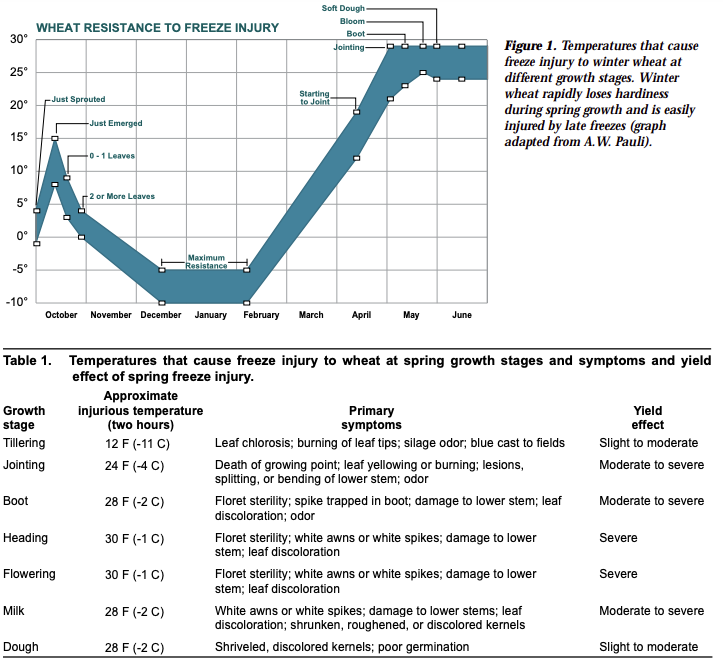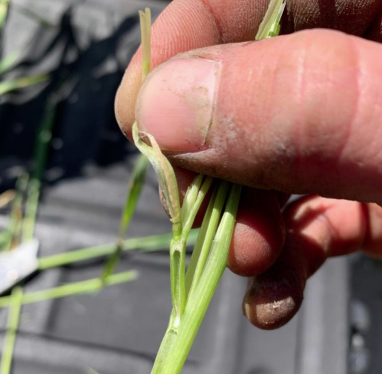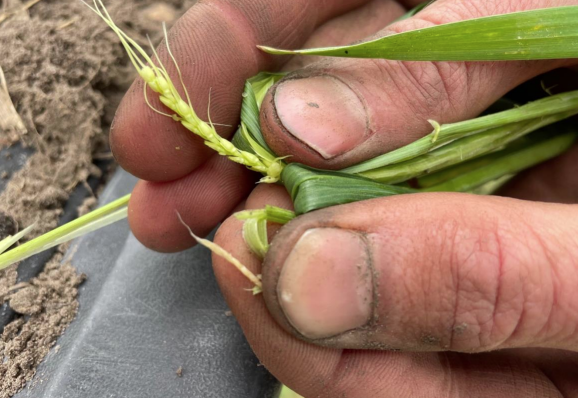March 21, 2023 – Low Temperatures
go.ncsu.edu/readext?926312
en Español / em Português
El inglés es el idioma de control de esta página. En la medida en que haya algún conflicto entre la traducción al inglés y la traducción, el inglés prevalece.
Al hacer clic en el enlace de traducción se activa un servicio de traducción gratuito para convertir la página al español. Al igual que con cualquier traducción por Internet, la conversión no es sensible al contexto y puede que no traduzca el texto en su significado original. NC State Extension no garantiza la exactitud del texto traducido. Por favor, tenga en cuenta que algunas aplicaciones y/o servicios pueden no funcionar como se espera cuando se traducen.
Português
Inglês é o idioma de controle desta página. Na medida que haja algum conflito entre o texto original em Inglês e a tradução, o Inglês prevalece.
Ao clicar no link de tradução, um serviço gratuito de tradução será ativado para converter a página para o Português. Como em qualquer tradução pela internet, a conversão não é sensivel ao contexto e pode não ocorrer a tradução para o significado orginal. O serviço de Extensão da Carolina do Norte (NC State Extension) não garante a exatidão do texto traduzido. Por favor, observe que algumas funções ou serviços podem não funcionar como esperado após a tradução.
English
English is the controlling language of this page. To the extent there is any conflict between the English text and the translation, English controls.
Clicking on the translation link activates a free translation service to convert the page to Spanish. As with any Internet translation, the conversion is not context-sensitive and may not translate the text to its original meaning. NC State Extension does not guarantee the accuracy of the translated text. Please note that some applications and/or services may not function as expected when translated.
Collapse ▲Potential Freeze Damage in Wheat
Depending on your location, the early morning hours of March 21, 2023 led to temperatures as low as 23 Fahrenheit and at or below 24 Fahrenheit for approximately 3 hours. Any wheat line that had already jointed was potentially susceptible to freeze injury due to loss of cold tolerance and inability to withstand an extended period of time below freezing without injury. The extent of the potential damage will appear a week after the freeze event. Early maturing varieities such as USG 3118, SH 7200, AGS 2024, Progeny #Berkeley, AgriMaxx 492 & 502, and Dyna-Gro 9070 were at most risk.
Below is a chart from a Kansas State publication showing wheat resistance to freeze injury at different growth stages. Also find more information from the North Carolina Small Grain Production Guide on freeze injury.
When scouting, look at the first two nodes for damage on the the main stem. You can also split the stem to look for internal damage to the wheat head. Tillers that have suffered stem damage will have more difficulty translocating water later in the season and as a result will shut down faster during hot temperatures.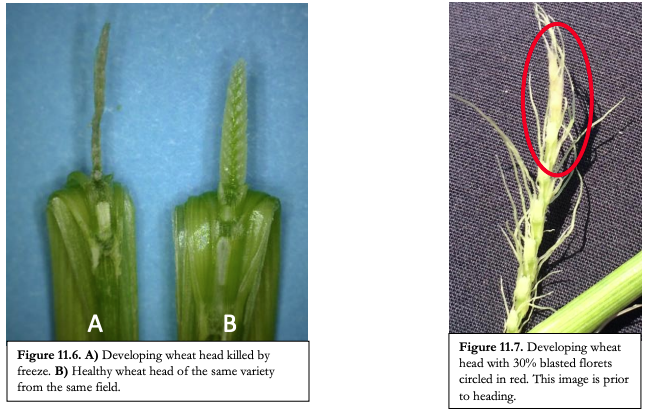 If any tillers were lost, secondary tillers will compensate some but will only result in about 1/3 of the yield of a tiller formed in the fall. Seed size and test weight will also be decreased for secondary tillers in comparison. Below are some photos of wheat from sub 25 Fahrenheit temperatures on March 13, 2022 in Perquimans County.
If any tillers were lost, secondary tillers will compensate some but will only result in about 1/3 of the yield of a tiller formed in the fall. Seed size and test weight will also be decreased for secondary tillers in comparison. Below are some photos of wheat from sub 25 Fahrenheit temperatures on March 13, 2022 in Perquimans County.
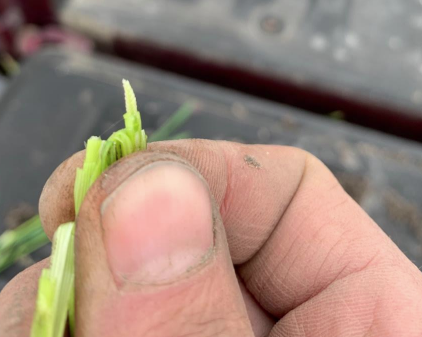 Head that was not damaged – normally green or white vs brown when damaged
Head that was not damaged – normally green or white vs brown when damaged
If you have any questions or need assistance with evaluating potential freeze damage, contact Dylan Lilley at 252-358-7822.





